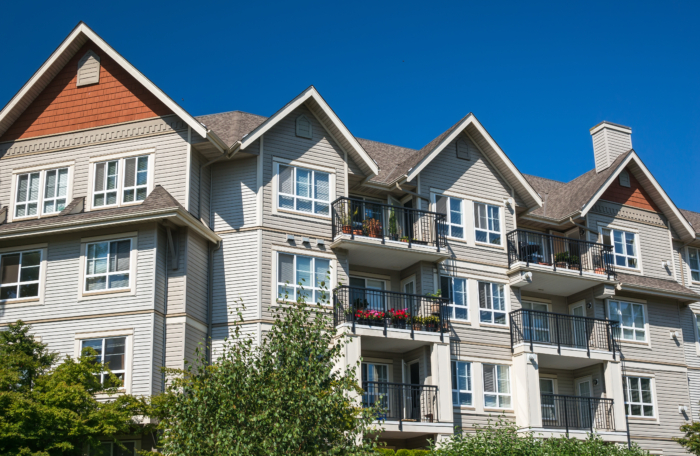How building more luxury apartments helps the poor
As pressure builds for local and state policymakers to address New Hampshire’s severe housing shortage, some activists and lawmakers are again blaming developers rather than regulators for the state’s high rents.
Developers are building “too many” apartments for higher-income renters, some claim. This raises rents, hurting the poor, so government must intervene to make builders reserve a certain percentage of new construction for lower-income households, the argument goes. Some also want the state to give subsidies to low-income renters.
The idea that building more apartments raises rents has achieved the status of conventional wisdom in some activist circles. It’s done so despite it being untrue, and confirmed untrue by growing stacks of economic evidence.
Even academics repeat the claim. A California political science professor, in a February opinion column for New Hampshire Bulletin, wrote that “construction in the high-end ‘luxury’ rental market, which drives up rents for everyone else, remains in an upward trend.”
In fact, building more market-rate apartments reduces rents for middle-and lower-income households. This has been well established in academic research for years. And recent studies have provided more detailed confirmation of the effect.
A review of recent research on the subject finds:
- Researchers at the Upjohn Institute and Federal Reserve Bank of Philadelphia found in 2019 that new market-rate apartment buildings “decrease nearby rents by 5 to 7 percent relative to locations slightly farther away or developed later.” They made a point of stating that the evidence ran against common complaints about market-rate apartment construction. “Contrary to common concerns, new buildings slow local rent increases rather than initiate or accelerate them,” they wrote.
- A 2020 study by the National Multifamily Housing Council Research Foundation found that a “substantial flow of new construction apartments, largely targeted to middle- and higher-income groups, has enabled the ‘filtering’ process to create affordable housing opportunities for low-income households,” as a summary of the report put it.
- NYU researchers in a 2018 paper sought to answer claims that building market-rate apartments raised rents. “We ultimately conclude, from both theory and empirical evidence, that adding new homes moderates price increases and therefore makes housing more affordable to low- and moderate-income families.” They also noted that housing shortages are caused by regulations, not new construction. “Despite the arguments raised by supply skeptics, there is a considerable body of empirical research showing that less restrictive land use regulation is associated with lower prices. The evidence takes many forms. A large number of cross-sectional studies show that stricter (less strict) local land use regulations are associated with less (more) new construction and higher (lower) prices.
- A 2021 UCLA review of recent studies on the effects of building market-rate apartments found overwhelming evidence that new construction of market-rate units lowers rents. Referencing the NYU paper cited above, the authors wrote: “Since that article came out two years ago, at least six working papers have been released that examine the connections between market-rate housing production and affordability at the neighborhood level. Four of the papers conclude that market-rate development makes nearby housing more, not less, affordable. The fifth paper looks at rents across entire cities rather than at the neighborhood level, but finds that new development causes rents to fall for units across the income distribution. Findings in the sixth paper are mixed, and offer some reason to think new development makes nearby housing more expensive. Although the papers await peer review, and readers should bear that in mind, the importance and near-unanimity of their findings makes discussing them worthwhile.”
Building luxury or higher-end apartments draws higher-income renters out of yesterday’s luxury apartments and into the new luxury apartments. Increased vacancies in yesterday’s luxury apartments attract higher-income residents who’ve been living in mid-level apartments. As new construction creates more vacancies, rents come down. That effect filters throughout the housing supply, lowering rents all the way down. Economists call this “filtering,” and it’s an effect thoroughly established in academic and industry studies of rental housing markets.
There’s no doubt that filtering occurs when enough new apartments are built. It can’t occur, though, if government prevents developers from creating those new high-end apartments. The problem in recent years has not been the creation of too many high-end apartments, but too few.
Harvard’s Joint Center for Housing Studies pointed this out in 2020:
“What is different about the recent dynamic is that new construction is accommodating a growing number of high-income households, but just barely. Indeed, despite the relatively high rents, the number of new apartment units being added each month is scarcely keeping up with growth in units rented out, or ‘absorbed’ by new renters. When new construction is only just meeting demand from new high-income renters, it means that, in effect, new high-end units are being rented out by new, high-income renters, rather than by current high-income renters trading up to a newer unit, and therefore fewer old units are left to ‘filter down’ to a lower-income renters.”
In other words, when developers are allowed to build more market-rate apartments, rents come down for everyone. When they aren’t, rents stay high.



